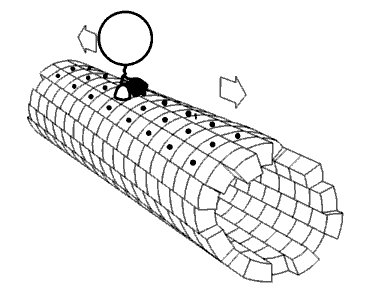
Photo from academic.microsoft.com
In this study we have applied a model to explain the reported subdiffusion of particles in mucus, based on the measured mean squared displacements (MSD). The model considers Brownian diffusion… Click to show full abstract
In this study we have applied a model to explain the reported subdiffusion of particles in mucus, based on the measured mean squared displacements (MSD). The model considers Brownian diffusion of particles in a confined geometry, made from permeable membranes. The applied model predicts a normal diffusive behavior at very short and long time lags, as observed in several experiments. In between these timescales, we find that the "subdiffusive" regime is only a transient effect, MSD∝τα,α<1. The only parameters in the model are the diffusion-coefficients at the limits of very short and long times, and the distance between the permeable membranes L. Our numerical results are in agreement with published experimental data for realistic assumptions of these parameters. Finally, we show that only particles with a diameter less than 40 nm are able to pass through a mucus layer by passive Brownian motion.
Journal Title: Biophysical journal
Year Published: 2017
Link to full text (if available)
Share on Social Media: Sign Up to like & get
recommendations!